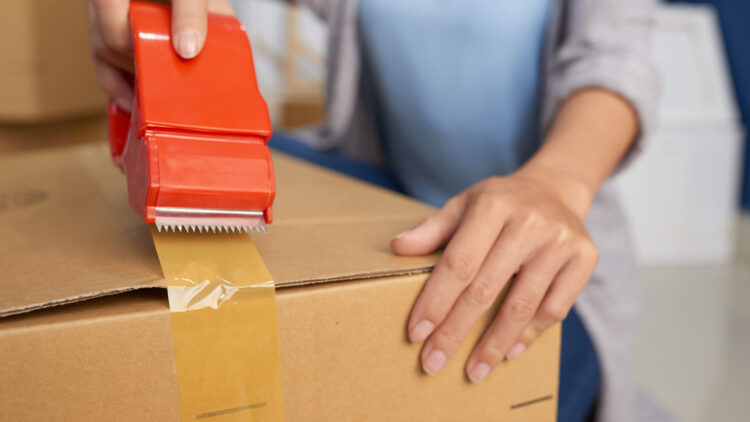Moving can be one of the most stressful and physically demanding tasks, especially if you have heavy or bulky items such as furniture and appliances that need to be moved. Whether you’re moving a few feet away or a few states away, it’s important to employ best practices when it comes to moving heavy and bulky items. In this guide, we’ll provide helpful tips on moving large objects with ease and safety precautions to take when doing so. To get started, familiarize yourself with the basics of moving heavy items.
Page Contents
1. Assess the Object

Source: spy.com
Before you tackle the task of moving a large, heavy object, it’s important to take stock of both the object and the space around it. Your initial considerations should include:
- Weight: How heavy is the object? Can you lift it by yourself or will you require help?
- Measurements: How large is the object? Will you need extra space to maneuver it in tight quarters?
- Path: Is there a clear path from its original location to the destination? Are there any obstacles in between (staircases, doorways)?
These questions can be helpful when determining how best to tackle an intimidating move. After assessing these factors, it’s time to develop your plan of attack. You can do it by yourself, with the help of friends, or you can hire professional movers and avoid the hustle altogether.
2. Gather the Right Materials
Before you can move your large furniture and appliances, you’ll need to equip yourself with the right tools and materials that can help make the job easier. Start by gathering cardboard moving boxes, plastic shrink wrap, and packing tape to secure the items for the move. This will help you avoid damage and make it easier to stack different items in the truck bed or storage unit. You’ll also need a couple of sets of moving blankets for additional padding when transporting heavier items like a sofa, refrigerator, or piano.
If possible, borrow or rent a hand truck that can be used as an appliance dolly during the move. Getting a stair climber hand truck (or trolley) is also recommended if you plan on taking any items up or down multiple flights of stairs — this type of dolly is designed specifically for these types of tasks.
You may want to invest in shoulder straps with handles so that two people can easily carry heavier furniture together without having to worry about maneuvering around tight corners or stairways. It’s also worth noting that larger pieces may require specialized equipment — consult professional movers if this is the case as they’ll have all the gear needed safely lift large furniture pieces like couches and pool tables.
3. Prepare the Object for Moving

Source: einsteinmoving.com
Before attempting to move a heavy object, it’s important to take the time to prepare it for the move. This will help ensure that the object does not become damaged or cause injury during the move. Take the following steps when preparing an item for heavy lifting:
- Remove any sharp edges from around the object. Use sandpaper, a file, or a utility knife to remove sharp objects.
- Pack any protruding parts of your object securely before moving it. This is especially important if you are packing up expensive items such as electronics or valuable antiques because they could become damaged during transport if their fragile parts are not secured properly beforehand. Be sure to use bubble wrap or plastic casing where needed so that your valuable objects remain secure while being transported from one place to another
- Secure the item(s). Use ratchet straps so everything stays fastened down during transport and use extra caution when packing an exceptionally heavy item such as a piano – make sure that nothing shifts during transport!
- Moving the Object
Moving heavy objects safely and efficiently is important so that you don’t risk injury or damage to your belongings. Before you attempt to move the object, make sure you have everything you need on hand. You’ll need gloves and sturdy shoes for protection. Make sure there’s enough space in the room or area for the item to move without hitting any furniture on its way out, as well as a wide enough path for it to go through doorways and hallways. Additionally, make sure that there are no small children or pets near the area, as this can be hazardous if the item slips during transport. When ready, consider these steps:
5. Unloading

Source: rentason.ca
Bring enough people with you who can help with the lifting and moving of the object. It’s important to make sure everyone is properly trained on how to lift and carry the heavy object before unloading it, as improper technique can cause injuries.
Make sure you have a clear path for maneuvering the object from your vehicle into its destination; obstacles like steps or uneven ground should be avoided if possible.
Where possible, always utilize dollies and furniture trolleys when transporting larger items in order to spread out their weight load so they can be more easily maneuvered over longer distances, often with less effort required by those helping with the move too!
Be mindful of nearby walls and doorways – minimizing damage from an accidentally dropped or stuck item during unloading is vital! You may need spacers such as cardboard padding between these objects to protect them from scratches or dents caused by a slipping item during transport or moving it into position in its new location
6. Clean Up
Start by finding a clean corner or an area away from doorways or walkways, and start gathering packing supplies in designated piles or on specified furniture. To avoid injuries or future hazards, recycle any boxes that show signs of weakness and dispose of unnecessary bubble wrap carefully. Break down boxes flat for easy transport so less hauling is necessary. Have garbage bags handy for disposing of debris and larger items that are no longer needed such as outdated furniture or appliances.
Sweep the area thoroughly after it has been cleared out for any nails, tacks, screws, or splinters that were left behind by dismantled items. If there are furry companions lingering around after the chaos calms down, consider securing them in a comfortable room unless supervised while mopping up stray pieces or splinters on the ground. The last but not least important step in this process would be locating cleaning supplies such as mops, broom handles, and sponges to prepare surface areas for heavy objects so they can be placed with utmost care in a safe environment.
Conclusion
Moving heavy objects by yourself can be quite a challenge, but with the right techniques and equipment, it can be done safely. Make sure to plan beforehand and give yourself plenty of time to get everything into place. You may need to enlist extra help from your friends and family to overcome any obstacles along the way. Have the right lifting tools on hand such as a moving dolly or furniture straps and use some tried-and-true packing tricks like placing items on tires or already-packed containers for added stability. Be sure to break large items down into smaller parts whenever possible for easier maneuvering.





